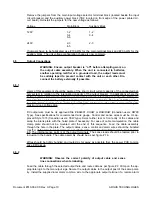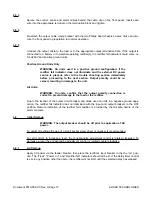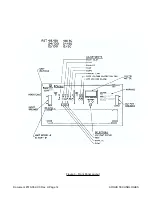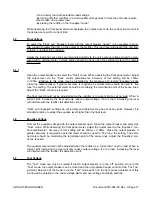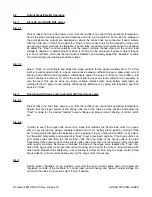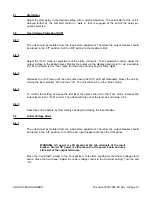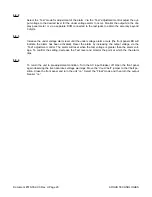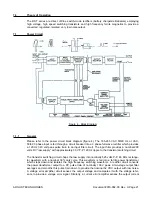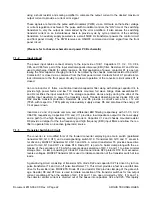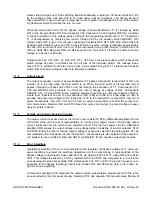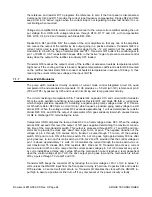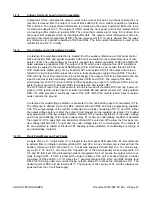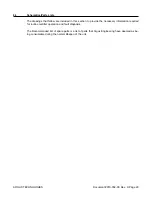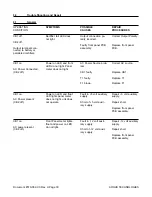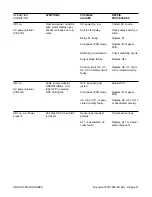
6.6
Output Slope/Parallel Operation
6.6.1
All units are ARGUS RST series
6.6.1.1
Wait at least one hour after power up so that the rectifiers can reach their operating temperature.
Set all the slope controls fully counter-clockwise and with a 4-1/2 digit D.V.M. monitor the voltage at
the point where the outputs are paralleled or where the sense lines are connected if used. Assure
that the units are in “Float” and adjust the “Float” control of each unit for the desired no slope volt-
age and as equal current as is attainable. If sense lines are used equal current cannot be obtained
so adjust the “Float” controls carefully until the output currents change state and the correct load
voltage is obtained. A slight amount of slope (1/8 turn) can be employed if desired. Select “Equal-
ize” on all rectifiers, wait until the load current stabilizes and similarly adjust the “Equalize” controls
for current sharing and desired equalize voltage.
6.6.1.2
Select “Float” on all rectifiers and adjust the slope controls for the desired voltage drop. 1% at full
load is recommended which is a good compromise between sufficient slope to allow good current
sharing and sufficient load regulation. Alternatively adjust the slope controls on the rectifiers until
current sharing is achieved. To verify the current sharing over any load condition it is necessary to
vary the load. This can be done by using a variable resistive load, using battery plant loads, by
turning off the AC power to temporarily discharge the batteries or by going into “Equalize” and then
back into “Float”.
6.6.2
Operation with Argus units in parallel with fixed slope units
6.6.2.1
Wait at least one hour from power-up so that the rectifiers can reach their operating temperature.
Assure that the slope controls of the Argus units are at the twelve o’clock position and adjust the
“Float” controls for the desired “loaded” output voltage and proper current sharing of all the rectifi-
ers.
6.6.2.2
In order to see if the Argus units are set at a slope that matches the “fixed slope” units it is neces-
sary to vary the load by using a variable resistive load or for “battery plant” loads by turning off the
AC to temporarily discharge the batteries and re-applying it to get a high load condition or by select-
ing “Equalize” temporarily and re-selecting “Float” to get a low load condition. If the Argus unit’s out-
put current varies less than the “fixed slope” units, then the slope of the Argus units is too high.
Conversely if the output current of the Argus units varies more than the “fixed slope” units the Argus
units need more slope. Decrease or increase the slope of the Argus units, readjust the “Float” con-
trols of the Argus units for proper load current sharing, and re-verify the correct current sharing with
other loads. Repeat until satisfactory current sharing is achieved. Fine tune the slope control of the
Argus units for correct current sharing among the Argus units if necessary.
6.6.3
Finally, select “Equalize” on all rectifiers, wait until the load current settles down and adjust the
“Equalize” controls of the rectifiers for correct load current sharing and “loaded” output voltage. Do
not touch the slope controls. Re-select “Float” if desired.
Document #010-002-C0 Rev. H Page 18
ARGUS TECHNOLOGIES
Summary of Contents for RST 48/30
Page 1: ...RST 48 30 Switched Mode Rectifier Eliminator 010 006 B0 ...
Page 24: ...Document 010 002 C0 Rev H Page 14 ARGUS TECHNOLOGIES Figure 3 Front Panel Layout ...
Page 52: ......
Page 53: ......
Page 63: ......
Page 75: ......







